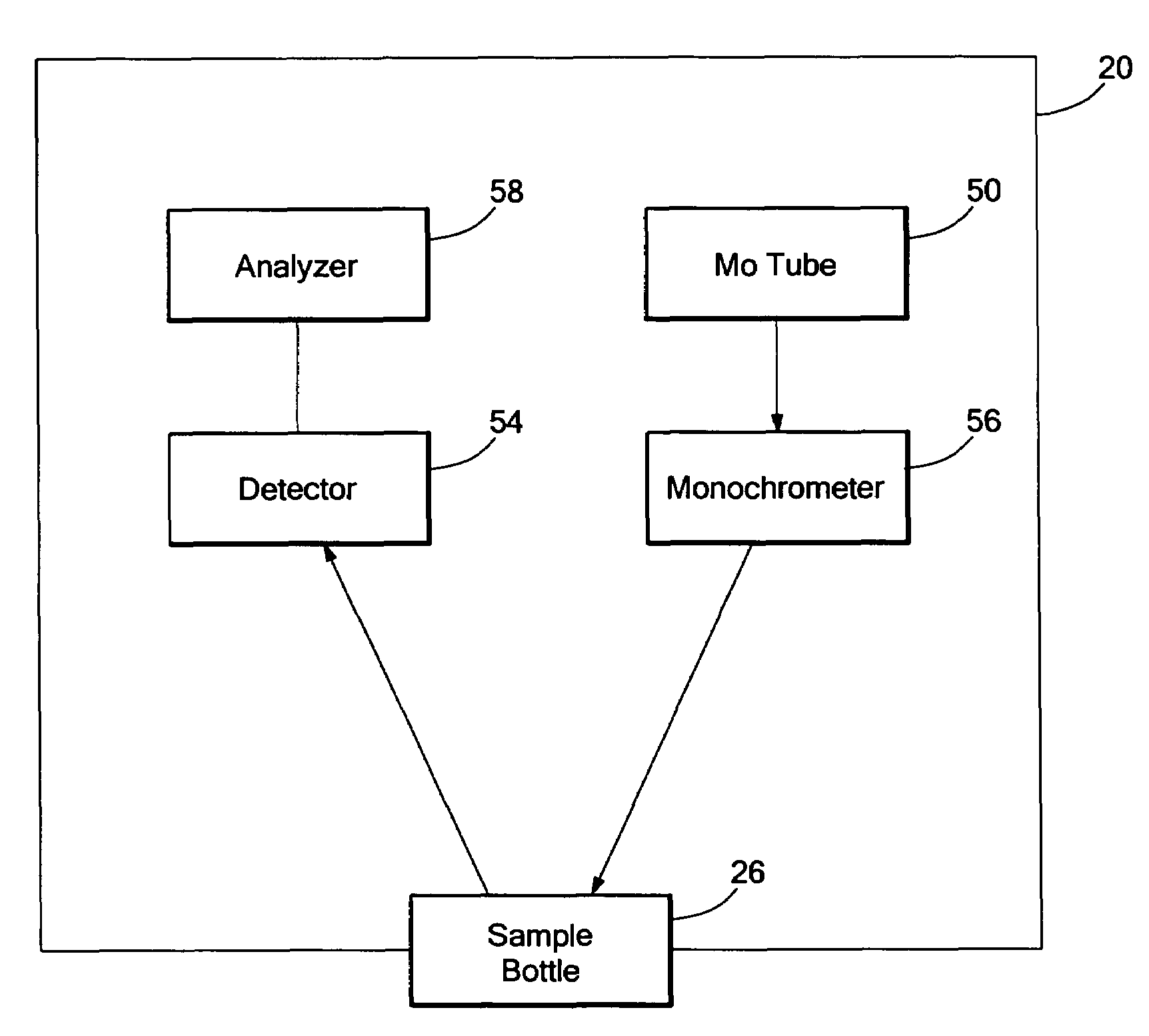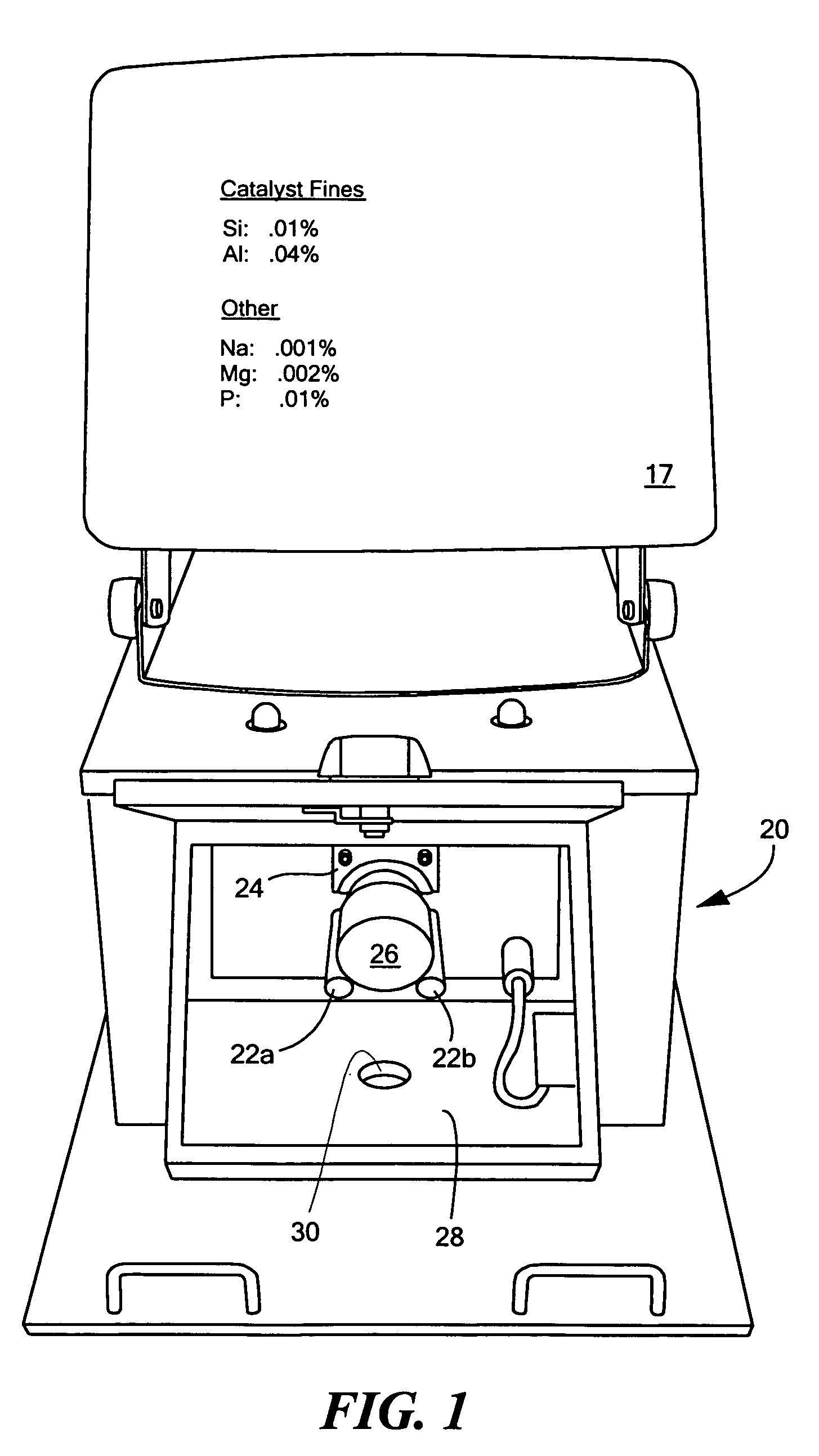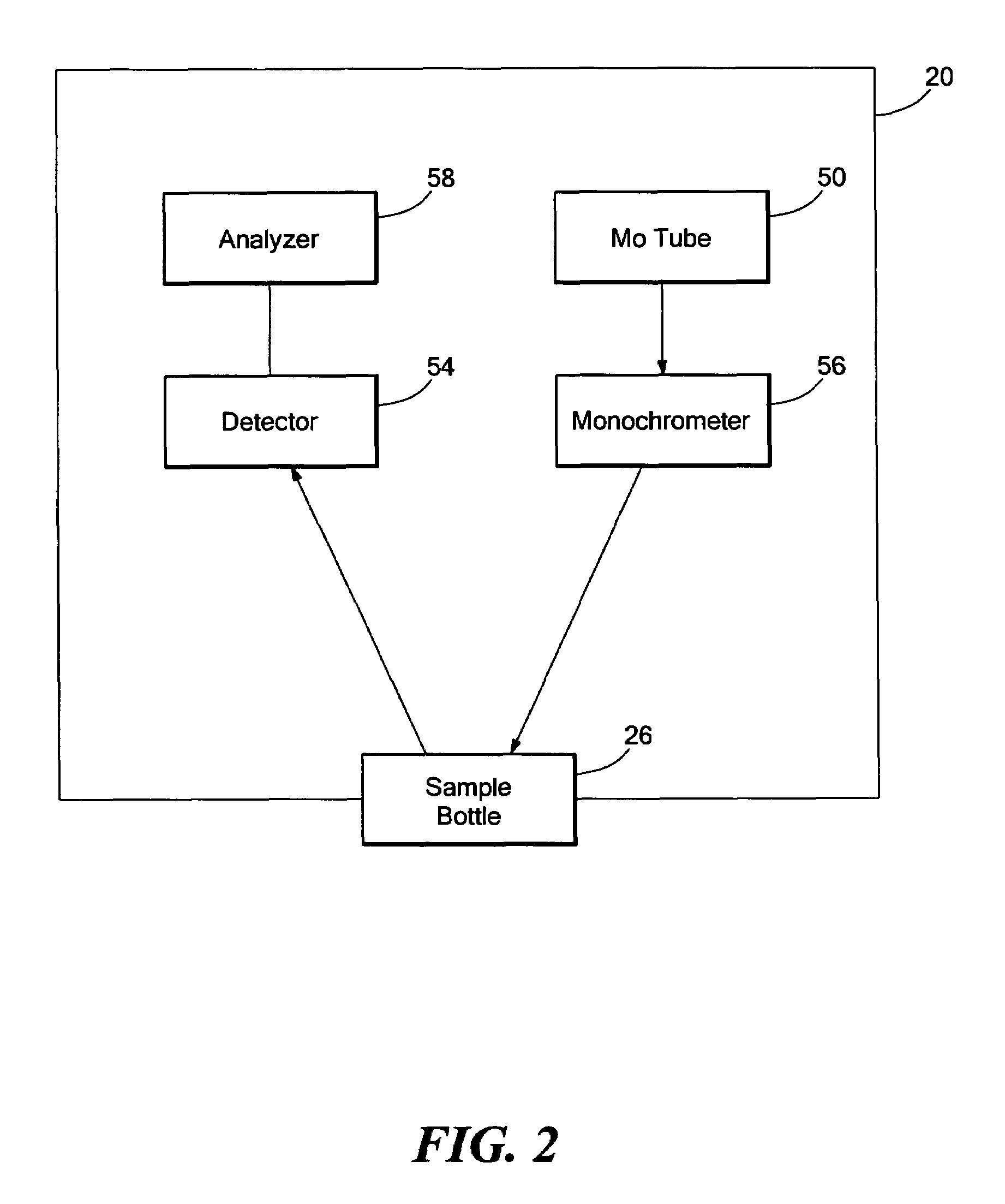Fuel analysis system
a fuel analysis and fluorescence technology, applied in the field of xray fluorescence (xrf) systems, can solve the problems of relatively expensive systems, affecting the detection accuracy of catalyst fines, so as to reduce the background signal of exciting radiation, improve the detection accuracy, and reduce the effect of catalyst fines
- Summary
- Abstract
- Description
- Claims
- Application Information
AI Technical Summary
Benefits of technology
Problems solved by technology
Method used
Image
Examples
Embodiment Construction
[0028]Aside from the preferred embodiment or embodiments disclosed below, this invention is capable of other embodiments and of being practiced or being carried out in various ways. Thus, it is to be understood that the invention is not limited in its application to the details of construction and the arrangements of components set forth in the following description or illustrated in the drawings. If only one embodiment is described herein, the claims hereof are not to be limited to that embodiment. Moreover, the claims hereof are not to be read restrictively unless there is clear and convincing evidence manifesting a certain exclusion, restriction, or disclaimer.
[0029]FIG. 1 is a depiction of one example of an XRF system in accordance with this invention engineered to detect and measure the concentrations of catalyst fines in a fuel oil sample. In one preferred embodiment, a sample holder includes posts 22a and 22b and sample adapter 24 which position sample holder 26 within unit 2...
PUM
 Login to View More
Login to View More Abstract
Description
Claims
Application Information
 Login to View More
Login to View More - R&D
- Intellectual Property
- Life Sciences
- Materials
- Tech Scout
- Unparalleled Data Quality
- Higher Quality Content
- 60% Fewer Hallucinations
Browse by: Latest US Patents, China's latest patents, Technical Efficacy Thesaurus, Application Domain, Technology Topic, Popular Technical Reports.
© 2025 PatSnap. All rights reserved.Legal|Privacy policy|Modern Slavery Act Transparency Statement|Sitemap|About US| Contact US: help@patsnap.com



